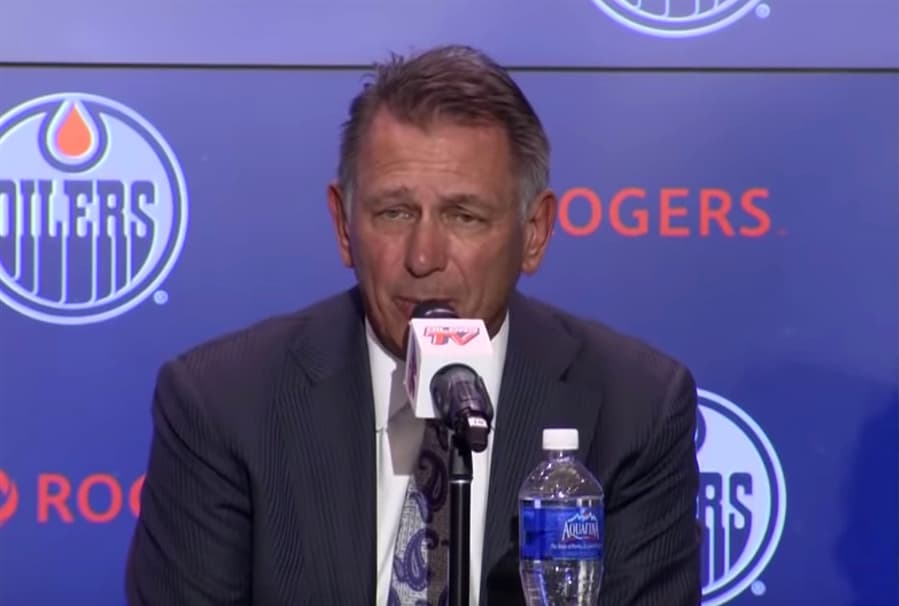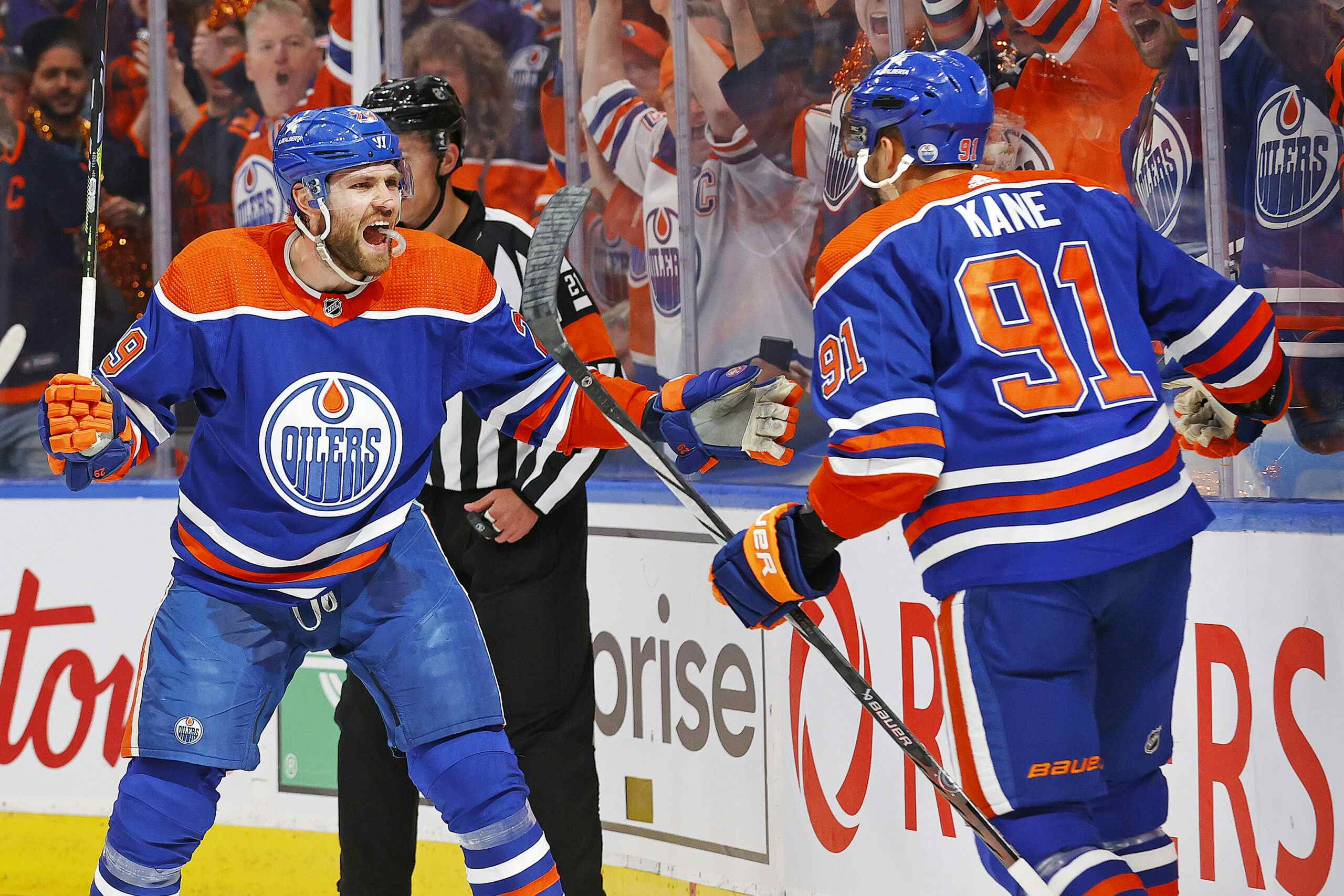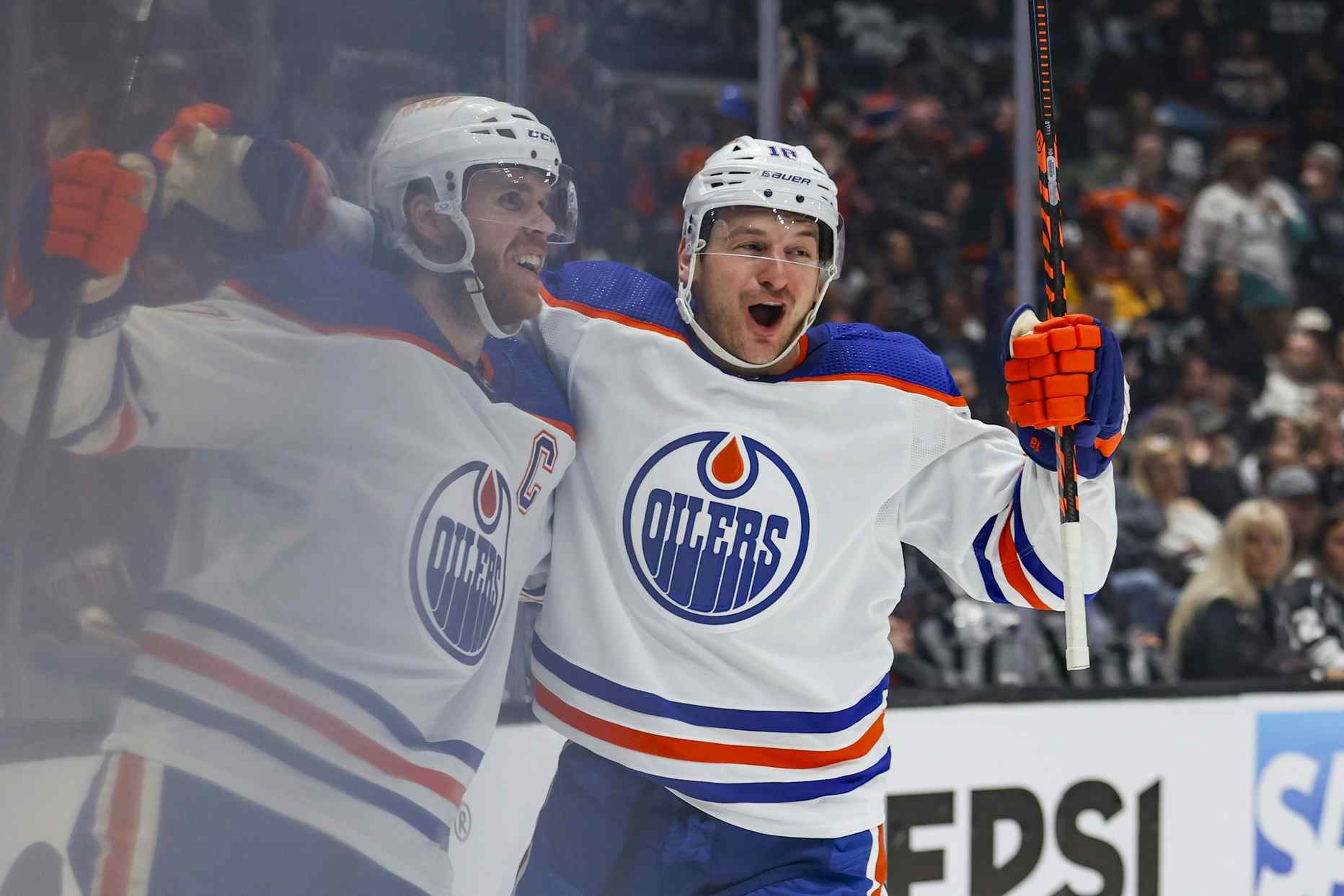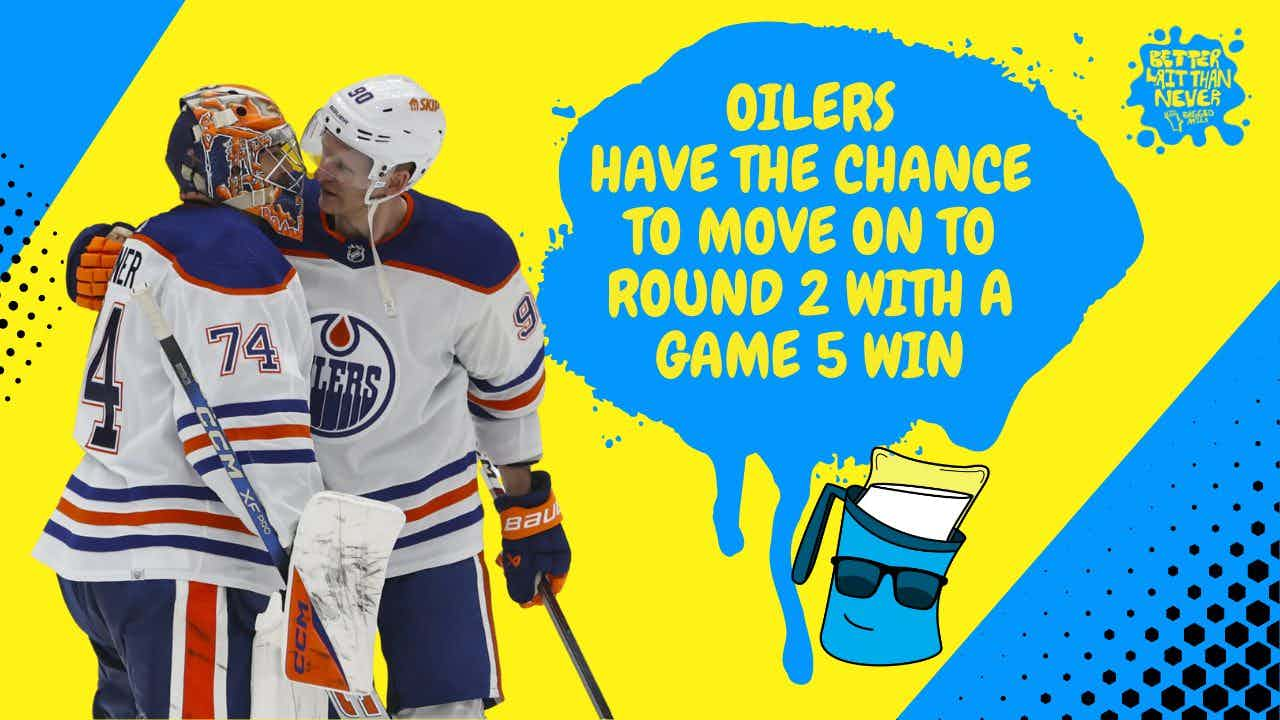Changing the Pro Scouting Landscape

By Jason Gregor
4 years agoWhen an NHL team misses the playoffs in 12 of the past 13 seasons there isn’t just one person or strategy that failed. Virtually all of them did, especially when you consider only four franchises in the history of the NHL have endured such a streak of losing.
The @Detroit Red Wings made the playoffs once in 13 seasons between 1971-1983. They avoided 13 consecutive seasons by making the postseason in 1978. The streak of futility rewarded them by selecting Steve Yzerman fourth overall in the 1983 draft. He would play 1,514 games for the Wings and win four Stanley Cups. They also selected Bob Probert (46th overall and 935 GP), Petr Klima (86th and 786 GP), Joey Kocur (88th and 821 GP) and Stu Grimson (186th and 729 GP). The Wings went on to make the playoffs in 30 of the next 32 seasons, including 25 in a row between 1991-2016.
The @Edmonton Oilers have only made the playoffs once in the past 13 seasons. Their only appearance in the postseason was in 2017 and they lost in game seven of the second round. But the other 12 seasons have been ugly. This year the Oilers will try to avoid becoming the third team with one playoff appearance in 14 seasons. Ouch.
The Atlanta Thrashers/Winnipeg Jets 2.0 only had one playoff appearance in 14 seasons between 2000-2014. The Thrashers struggled as an expansion team making the playoffs once in eleven years, before relocating to Winnipeg where the Jets missed the dance their first three seasons. Winnipeg has made the playoffs three of the past five seasons and has built a solid foundation.
The @Florida Panthers also had one playoff berth in 14 seasons between 2001-2015. They only have three playoff appearances in the last 21 years. It has been ugly in Florida, but there is a lot of hope their drought will end this season. But, as Oilers fans can attest, saying it and doing it are very different.
The Panthers and Thrashers/Jets’ run of futility was interrupted by the 2005 NHL lockout, which is why I wrote consecutive seasons, not years, but all of these runs of futility have been brutal. The Oilers are lucky they play in a hockey market or their attendance would mirror that of Florida and Atlanta during those periods of terrible.
One area that must improve in Edmonton is their pro scouting. The evaluation of their own players, subsequent trades and free agent signings this organization has made over the past 13 years illustrates how poorly of a job they have done in evaluating pro talent. @Jeff Petry, @Justin Schultz, @Andrew Cogliano, @Taylor Hall, @Jordan Eberle, @Ryan Strome, @Drake Caggiula are examples of improper evaluation of your own player’s value when you look at the trade returns.
Then consider free agent signings which haven’t panned out: Nikita Nikitin, Mark Fayne, Benoit Pouliot, Andrew Ference, @Milan Lucic, to name a few.
No team is going to win every trade, make every good free agent signing, or properly evaluate their own players. But when you make significantly more wrong decisions than right ones, your organization will miss the playoffs in 12 of 13 seasons.
NEW REGIME…

New General Manager Ken Holland inherited the challenge of making the Oilers competitive and relevant again. He has stated openly and honestly there is no quick fix. He wants the team to compete, and of course make the playoffs this upcoming season, but he wasn’t going to make knee-jerk decisions. Since he took over there have been significant changes in management, scouting and the coaching staff. He has also added quite a few new players, but all of them are on short term deals.
The pro scouting department is undergoing change and last week he hired Archie Henderson as the Director of Pro Scouting. Henderson has been scouting for over 20 years. He was in Washington, Ottawa and Detroit.
I caught up with Henderson to discuss pro scouting and his vision for the future.
Gregor: Scouting pros is different than amateur players. Amateur scouting is a lot about projections down the road, while the pros are more on what they are doing now. You look for pro players who have yet to find footing in an organization, and obviously proven ones who can help you. You’ve worked with Ken Holland for close to eight years in Detroit, and before in Washington and Ottawa. What is your philosophy when you’re pro scouting?
Henderson: I follow my direction from Ken Holland who has a plan and he’s going to put that in place. So both myself and the new director of amateur scouting, Tyler Wright, Ken’s going to give us direction as to what he wants done, the type of players that he wants us to follow.
On the pro side, you’re absolutely correct. It is a little bit different in the sense that we’re not going to make a trade for an Auston Mathews or all of these top-end players. I’m only using him as an example. The top-end players on most of these NHL teams are rarely getting moved. What you’re looking for is that one player, that one needle in the haystack that maybe is value wise, maybe not making a whole lot of money but can overachieve based on what his contract is. And if you can find one or two of those guys along the way, and supplement the roster that you already have, then you’re only going to help your organization in the long run. You’re going to give assets to your organization to do whatever it is that they need to do, to make them better going forward.
Gregor: How many viewings do you feel you need on a player to really understand what they’re capable of?
Henderson: Well, that’s a great question. I think that most NHL defensemen, even if they come in and play when they are really, really young, you don’t really know what they’re going to be until they hit about the 200, or even 300, game mark.
Goaltenders, they seem to mature quite a bit later. You might find a goalie that comes in really hot. I can name several but I won’t — they come in at an early age, they play really, really well and then they fizzle off. And you find out what they are at a later age, maybe 26, 27 or 28.
The forwards, some take them a little while to find a role as to what that they can be. They come out of junior and are high scorers, but then they can’t to do it at the NHL level for whatever reason. Maybe they’re not getting an opportunity, or whatever reason. They adapt and become more of a bottom six type role. Those are the kinds of guys that we’re talking about that you can find and you just say, ‘You know what, this might be a guy who has more value in him,’ and ‘Let’s follow this guy.’
I will set that course with the scouts who work underneath me. I would say to evaluate a player for myself because I’ve been doing it for so long, I know most of the players, I know the players that I want to key in on. I would say at the beginning of the year you need to see them, you need to do your background work on them so that you know what they were like in Junior. You know what they were like in College, you know what they were like early on in their European careers, you know what type of people they were and then you watch them.
I would say in the course of a season you want to see the players of teams that you’re in charge of, at least six to eight times. And of course special assignments along the way. It’s a type of job where you just continue monitoring, continually following and you’re following the progression of these players.
Now with our group I can tell you what we’re going to try to be in on younger players. We’re going to try to build our prospect list as early as possible. Each one of the scouts will go through rookie camp. The NHL teams now all send their players to a rookie camp, so they’ll play rookie exhibition games. Our scouts will go to those camps for the teams they’re in charge of scouting. They’ll start to build prospect lists so that when Ken Holland says okay who is the best prospect on Anaheim, say he’s talking trade with Bobby Murray in Anaheim, he’s got it right there in front of him, that’s who we believe are the best prospects.
There will be other lists like who are the top players under the age 23. We’ll watch these kids, we will have already seen them. They will be on our prospect lists, now they’ll move to a list that says the best players under the age of 23. As we go through the process these players will go in different directions as I described. They may be a scorer early on, they may end up being a third line centre, kill penalties and take draws. A good scouting staff will monitor this and then when there is an opportunity to get a player, we go and get him. And that’s how you find your needle in the haystack.
SCOUTING PLAN FOR THE OILERS…

Gregor: You said Ken Holland will give you direction on which types of players he wants. Having worked with him before in Detroit, do you feel you have a good understanding of what he wants or is it going to change based on who you have in the Oilers organization now?
Henderson: Oh absolutely, I think what Ken wants us to be competitive as soon as possible. He wants to build.
If you look at the Detroit Red Wings, I’ll use them as an example because we both just came from there. After the 25-year playoff run was over, and you have to give Ken Holland credit, people can say, ‘Yes he had that player, or he had this player’ but he also did it. He won the Stanley Cups. He built a team that went to the playoffs 25 years in a row.
When that ended and we had to start rebuilding, the philosophy changed. All of a sudden we started acquiring draft picks. We started searching for that needle-in-the-haystack type of player.
Some of our older players started to retire like [Henrik] Zetterberg, [Pavel] Datsyuk, [Nicklas] Lidstrom, the list goes on and on.
But what he did is he accumulated in the last two years for the Detroit Red Wings an enormous amount of draft picks. I think there was 21 in total. They still have more draft picks coming next year and the year after. They have a cupboard full of young prospects, good, young prospects. They have perhaps some of the best 25 years and under NHL players with [Dylan] Larkin, [Andreas] Athanasiou, [Anthony] Mantha, [Filip] Hronek and others.
But the number one thing that he did, he did it all and he created cap space. They have almost 20 million dollars in cap space and these are things that the Edmonton Oilers are going to strive to get as we move forward. That’s part of Kenny’s plan and that’s a plan that I really believe in. We will try to be as competitive as we can be. Everyone wants to be, we want fans to be proud of the Edmonton Oilers. We want to win, but we also want to make sure that we can win long term and that we can be a contender in the future.
Gregor: Compare your first year of scouting 20 years ago to now. What have you learned most? How are you a better scout now than when you first started?
Henderson: Great question, Jason. You know I was talking to a guy about this earlier today. When I first started, it would have been back in ’95 or something, I forget the exact year but Jack Button, who is actually Craig Button’s father, who you know.
Jack Button hired me and he was very, very progressive guy. He was the director of player personnel and assistant general manager for the Washington Capitals under David Poile and they were an organization that needed to do and find things to make them better. So they were a step ahead on the learning curve.
They called me and asked me if I would be interested in heading up a pro scouting staff. Now in those days, there really weren’t that many pro scouts, like full time pro scouts. Maybe in the entire NHL there was six to eight guys. They great Gerry Melnyk, Bobby Plager, Doug Overton over with the Minnesota North Stars. Plager was with St Louis and of course and others. But there really weren’t many guys. I was by far the youngest in the group.
In those days a pro scout could have been more like a friend of the general manager who lived in Sault Ste. Marie. And the general manager would phone and say, ‘I need you to go in and look at a guy from Winnipeg, we’re thinking about trading for a guy from Winnipeg.’ And you go in and they’ll get your hotel and buy you a big dinner and a few beers after the game.
It’s not like that anymore. Now every staff has five, some six, pro scouts on each staff. They’re in charge of certain areas and you have one guy above them who is a director of pro scouting, for example like myself, maybe overseeing and running the staff, but I still have to know all of the players. The amount of scouts has been a major change. The computerization in hockey now is incredible compared to what it was back in those days.
You know I can remember, this was before they had cellphones for example (laughs), we would go back to our hotel rooms and say the red light in that hotel room was blinking you had a message and you had to phone back immediately because something was going on. Whereas if you had a report you had to file, you had to get it done and you had to get it into the office so that the general manager could read it the next morning.
Today, the game as it’s evolved, using a word that you said, a lot. Now you do your report. You punch it in, it’s there instantly. You can go back and look at 12,000 reports on people if that’s what you want to do. In those days you couldn’t do that and it’s really evolved that way. It is much more efficient and it allows me to go back and see notes from previous scouting reports much easier. That allows me to evaluate myself to see if I’m seeing the right things more often.
Gregor: You mentioned you work with Ken to fill out the rest of the scouting staff. How will that look?
Henderson: Well I think with us we’ll just go forward with the way that it is. We won’t be making a whole lot of changes in the beginning. We’ve got to get a feel for everyone. I will work with Kenny with whatever directive he gives me. I’m not a decision maker. I’m one of the worker bees if you want to call me that, and everything funnels form the top. And if I didn’t believe in Kenny as much as I do, or in the job that we’re going to get done moving forward, then it would be a different story. But as it is right now, he’ll make all of the decisions. I will come up with the teams each scout is going to be responsible in covering. We want them to be experts on those teams and players in their farm system.
Gregor: Do you need five or six pro scouts just to be competitive in today’s game?
Henderson: We’ve got all of the National Hockey League teams, we have a 32nd team coming soon. You have all of the American League teams, all the players in the East Coast League, and players in the Pro Leagues in Europe, and the situation is one where if you don’t have the proper coverage then you miss out on players. That’s it, that’s the bottom line. You have to know who the players are, where they are in every league. So you have to have guys in place all over the world to look at these players.
One of the things that’s interesting that you brought up about changes in the league is back when I first started, most of the league was North Americans. In fact, if you looked at the number, most were Canadians. Now it’s almost equal across the board.
And those players are coming from all over the world. We have to be prepared to find players. And the last thing that I’ll say on it is I really believe in the National Hockey League there is almost a shortage of NHL players. I’m talking about top, top, top NHL players. Each team has a couple of stars and we certainly have that in Edmonton. We have a few superstars. Every team has a couple of stars. The key is surrounding those people with good players. There’s not enough of them in the National Hockey League and we’re going to expand another team it’s going to become even harder. And that’s why our staff on the pro side has really got to beat the bushes. I know it’s easy to say, but it’s the truth. We’ve got to find the players out there that no one else is going to give an opportunity to and that we think can help us.
Gregor: Oilers fans are hoping you can uncover a few diamonds in the rough in the next few seasons, because you have some elite forwards, you just need some complementary players to fill out the roster, especially up front.
Henderson: Well that’s right and you know what I can tell you Jason, being an Alberta boy, I was born and raised here in Calgary. I’m coming back home to Alberta. I’m very, very aware of the passion that is in Edmonton and I know what the Edmonton Oilers mean to the communities. And I know what the people think of the Edmonton Oilers and what they want. It’s been a long time coming since they’ve been a club that’s been in the playoffs or had a serious run at things and people want that.
Me, all of the training staff, all of the scouts, the ownership, all of the upper management, everybody wants the Edmonton Oilers to be a success. And you know what, we’re all going to pull on the rope the same way and somewhere down the line we’re going to look back at these tough days that the Oilers have had and we’re going to say, ‘They’re over and now it’s a new beginning.’
PARTING SHOT…

Holland’s first free agent signings match with Henderson’s comments about a needle in haystack. @Josh Archibald, @Markus Granlund, @Gaetan Haas, @Tomas Jurco and @Joakim Nygard were all signed to one-year deals ranging between $750,000 and $1.3 million. How many will be solid contributors? One, two or three? None? Time will tell.
Evaluating amateur scouting often takes four to six years before you see what type of player they will be, but pro scouting is more instantaneous. We will find out by January, most likely, which of the free agent signings have worked out.
I find it hard to fathom Holland making worse trades than his predecessor. So the positive for Oilersnation is the pro evaluation should improve.
I’m most intrigued to see how Holland maneuvers with @Jesse Puljujarvi. He has said he won’t make a trade that doesn’t help the Oilers organization.
Can he get a proven NHL forward in return? Will he acquire a similar player, who has yet to find his place in the NHL?
If he makes a deal and the return pans out, then the pro scouting department is off to a good start.
THIRD ANNUAL OILERSNATION OPEN

After having such a blast over the past two years, we absolutely knew that we were going to organize another golf tourney for the summer and, after a few months of planning, we’re psyched to finally be able to launch our third annual golf tournament.
- When – August 29th, 2019 (Thursday). Tee off at 2 p.m.
- Where – Cougar Creek Golf Resort
- How much – $1000/team
- Teams – Groups of Four (4)
- How – Book your team here
As always, a portion of all proceeds from your ticket purchase will be donated directly to a local charity. This time we’ve partnered up with the Gregor Foundation to make sure that our kids are at their most handsome.
Recently by Jason Gregor:
Recent articles from Jason Gregor





